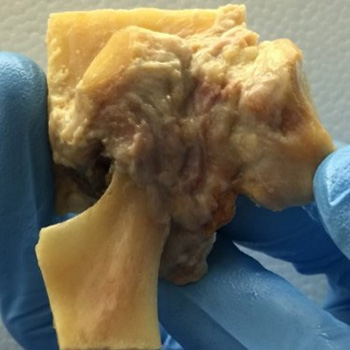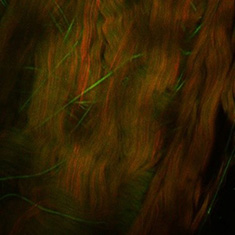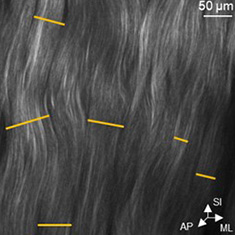Structure-Function Characterization of LCL Complex
 Improved understanding of temporomandibular joint (TMJ) mechanics and function, particularly related to pathologic risk, is critical to improve the health and wellness of the millions of Americans affected by TMJ disorders (TMDs) and address associated disparities. Our lab is characterizing mechanobiological properties of the TMJ lateral capsule ligament (LCL) complex to inform tissue incorporation in TMJ computational models. The function of the LCL complex, a band of tissue connecting the mandibular condyle and temporal bone, had not been fully explored, but the joint component had been hypothesized to influence risk of joint dysfunction by serving a vital role in maintaining proper joint approximation. The LCL complex must be accurately included in TMJ computational models estimating internal stress-strain distributions, which are highly relevant in assessing joint dysfunction risk. This ongoing project aims to characterize LCL complex mechanical and biochemical properties and investigate sexual and racial dimorphisms to inform future work addressing TMD disparities by sex and race.
Improved understanding of temporomandibular joint (TMJ) mechanics and function, particularly related to pathologic risk, is critical to improve the health and wellness of the millions of Americans affected by TMJ disorders (TMDs) and address associated disparities. Our lab is characterizing mechanobiological properties of the TMJ lateral capsule ligament (LCL) complex to inform tissue incorporation in TMJ computational models. The function of the LCL complex, a band of tissue connecting the mandibular condyle and temporal bone, had not been fully explored, but the joint component had been hypothesized to influence risk of joint dysfunction by serving a vital role in maintaining proper joint approximation. The LCL complex must be accurately included in TMJ computational models estimating internal stress-strain distributions, which are highly relevant in assessing joint dysfunction risk. This ongoing project aims to characterize LCL complex mechanical and biochemical properties and investigate sexual and racial dimorphisms to inform future work addressing TMD disparities by sex and race.

